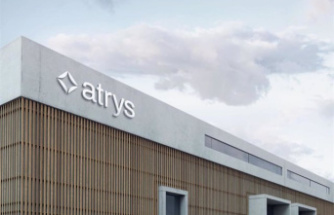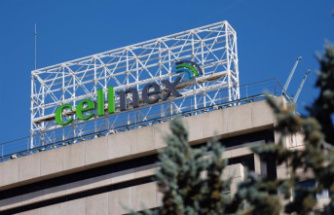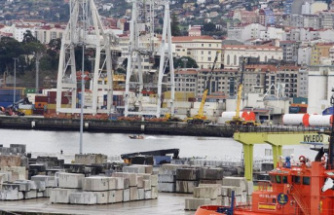As you can imagine, Fermi National Accelerator Laboratory gets lots of really smart visitors to its Batavia site, among them high-ranking politicians and some of the world's top scientists, including Nobel Prize winners.
But Fermilab staff members were so excited about last week's guest, many of them were standing in the conference room looking out the big window to the entrance as they anxiously awaited the arrival of … 1960s pop star Micky Dolenz.
When it comes to celebrity fandom, those physicists aren't monkeying around.
Dolenz — an actor, musician and director best known for his gig with the iconic group the Monkees on TV — contacted Fermilab archivist Valerie Higgins back in November about taking a tour of the facility.
Turns out the multitalented entertainer has been a physics geek since middle school when a teacher ignited his passion for the subject. And he had visited the Batavia lab in 1970, while starring in a play at Pheasant Run Playhouse, when the gigantic accelerator tunnel was first being built.
At times over the past 10 years, Imperial stormtroopers have been sighted in the prairie on Fermilab's Batavia campus.
Aliens have been spotted sitting around a Fermilab conference room-turned-cantina, and visitors to the physics lab's weekend public talks might have run into characters straight...
At times over the past 10 years, Imperial stormtroopers have been sighted in the prairie on Fermilab's Batavia campus.
Aliens have been spotted sitting around a Fermilab conference room-turned-cantina, and visitors to the physics lab's weekend public talks might have run into characters straight...
The reason for this recent call: He was giving a concert in St. Charles and wanted to know if he could donate the 16mm film he'd taken from that tour nearly 50 years ago, as well as drop by for another visit.
Higgins, of course, was more than ready to roll out the red carpet. Only 30, she's far too young to have watched the television show featuring the Monkees in their prime — it only ran from 1966 to '68 — but knew all the songs from the records her mom had kept over the years.
Perhaps even more excited was Fermilab senior scientist Adam Lyon, who is associate division head for systems for scientific applications.
Fermilab to celebrate 50th anniversary
Fermilab in Batavia has announced plans to celebrate its 50th anniversary next year.
Fermi National Accelerator Laboratory, a U.S. Department of Energy lab, was founded in 1967 under the direction of Robert Wilson. Scientists working at Fermilab discovered...
Fermilab to celebrate 50th anniversary
Fermilab in Batavia has announced plans to celebrate its 50th anniversary next year.
Fermi National Accelerator Laboratory, a U.S. Department of Energy lab, was founded in 1967 under the direction of Robert Wilson. Scientists working at Fermilab discovered...
Just typing that title tells me I'm in way over my head interviewing this guy. Thankfully, the very personable Lyon and I talked mostly about his own Monkees fandom. Now 47, he said he grew up watching the successful pop group in syndication, and, it turned out, his wife, Caryn, is a huge fan from watching the Monkees on MTV in college.
Even after learning about Dolenz's interest in physics, Lyon and Higgins both were "blown away" by the amount of knowledge Dolenz knew as they and other Fermilab staff gave their guest a four-hour tour of the facility. That included the Main Ring: the original four-mile-round particle accelerator ring Dolenz saw being built in 1970.
According to Lyon, Fermilab stopped using the Main Ring in 1997 and built a new accelerator in a new tunnel to feed particles into the Tevatron. Still, much of the Main Ring is intact with many magnets still in place.
Dolenz also got a tour of the remote operations center, the DZero and Tevatron, the MC1 building and Muon g-2 Experiment, and toured the MINOS underground neutrino area. And throughout the day, even surrounded by some of the brightest people in the world, he "held his own," said Higgins, which delighted those really high-IQ folks to no end.
But their guest, she added, also was excited that he could talk to people about particle physics, as he described it, "without their eyes glazing over."
Despite having a concert the next day, Dolenz joined a group of scientists for a TGIF gathering at the on-site pub, staying until 10 p.m. conversing with physicists about such topics as the gravitational wave discovery, the Higgs Particle and the large Hadron Collider.
"It was clear he was just so happy to be in a room where everyone understood physics," said Higgins.
"I've been a fan of particle physics for my whole life. My first email address back in the early'90s was Higgs137," Dolenz said later in an interview with Fermilab staff.
Of course the rest of us have no idea what that means, but it turns out he's referring to both the Higgs boson and the number of the fine structure constant, a number former Fermilab Director Leon Lederman observed as one of the most recurring in physics.
I, for one, still don't know what that means — but I'm happy to report that, even after all that smart talk, Fermilab hosts could still see the other side of the Monkee known as the goofy one.
"He was playful, funny, friendly and eager," noted Higgins, "but also very intelligent."
dcrosby@tribpub.com
Our editors found this article on this site using Google and regenerated it for our readers.













